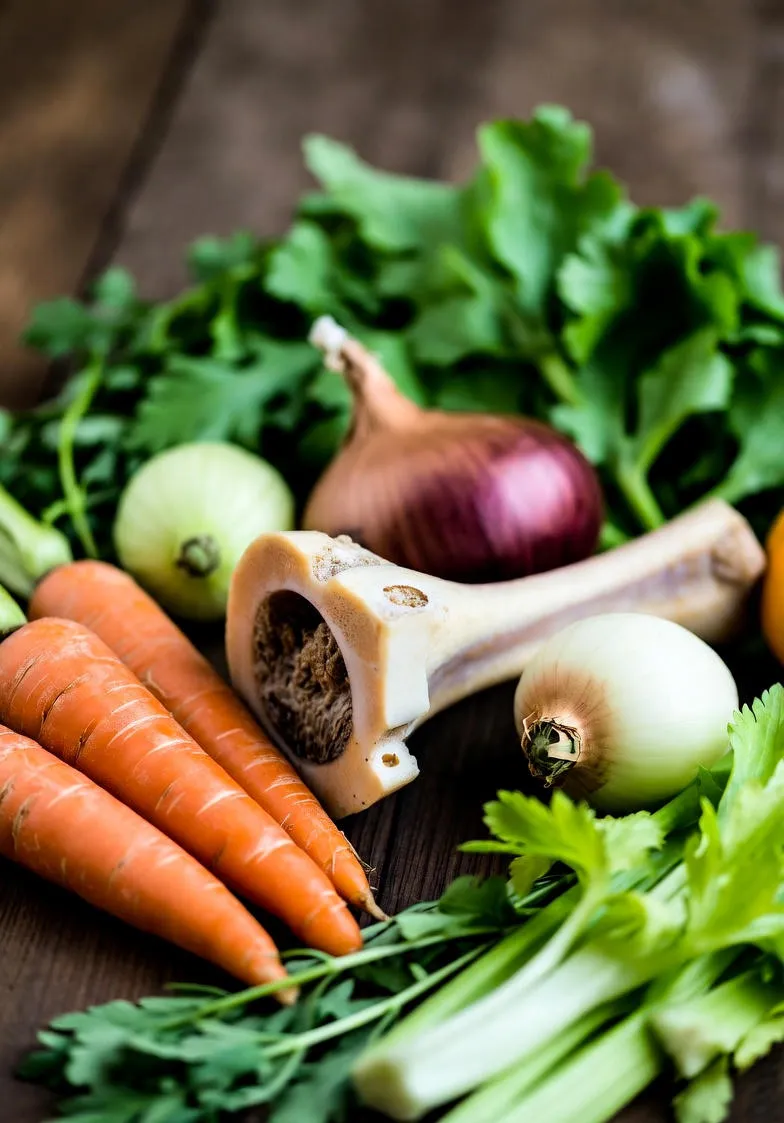The Ultimate Guide to Gluten-Free Soup Stock Bases: Recipes, Tips, and Health Benefits
Explore gluten-free soup stock bases with recipes, benefits, and tips. Learn to make vegetable, chicken, and beef stocks at home for delicious, allergy-safe meals.

Introduction to Gluten-Free Soup Stock Bases
Soup stock bases form the flavorful foundation of countless dishes, infusing everything from hearty stews to delicate risottos with depth and complexity. For those following a gluten-free lifestyle, whether due to celiac disease, gluten sensitivity, or personal choice, selecting the right stock is crucial. Traditional stocks often rely on wheat-based thickeners or barley, which can introduce hidden gluten. Enter gluten-free soup stock bases: versatile, safe alternatives that deliver robust taste without compromise.
This guide explores the world of gluten-free stocks, highlighting their benefits, homemade preparation methods, and practical tips for incorporation into your cooking routine. Whether you're a seasoned chef or a novice in the kitchen, mastering these bases will elevate your meals while keeping them inclusive and healthful.
Why Choose Gluten-Free Soup Stock Bases?
Opting for gluten-free options extends beyond mere avoidance of allergens. These bases often emphasize natural ingredients, resulting in cleaner, more nutrient-dense profiles. Vegetable-based stocks, for instance, pack in vitamins and minerals from fresh produce, while bone broths offer collagen and amino acids for joint health and gut support.
Health benefits abound: reduced inflammation for sensitive individuals, better digestion, and enhanced flavor without processed additives. In a world where convenience foods dominate, homemade or certified gluten-free stocks empower you to control quality, avoiding cross-contamination risks common in commercial kitchens.
Understanding the Basics: Types of Gluten-Free Stocks
Gluten-free stocks span several categories, each suited to different culinary needs. Vegetable stocks provide a light, versatile base ideal for vegetarian and vegan dishes. They simmer humble roots like carrots, celery, and onions into a golden elixir.
Chicken or turkey stocks, made from roasted bones and aromatics, yield a savory depth perfect for classic soups. Beef stocks, richer and more robust, shine in gravies and braises. Seafood stocks, crafted from shells and fish frames, add briny notes to chowders. Mushroom stocks offer an umami punch, mimicking meaty flavors without animal products.
Each type can be customized: add herbs like thyme or bay leaves for earthiness, or ginger and lemongrass for an Asian twist. The key is using gluten-free certified ingredients—no barley malt, wheat starch, or soy sauce laced with gluten.
How to Make Your Own Gluten-Free Vegetable Stock
Creating homemade vegetable stock is straightforward, cost-effective, and endlessly adaptable. Start with a large stockpot filled with water—about 4 quarts for a standard batch. Rough-chop 2 onions, 3 carrots, 3 celery stalks, and 2 leeks, tossing them in for their natural sweetness and crunch.
Incorporate garlic cloves, smashed for easy peeling, and a bouquet garni of fresh parsley, thyme, and a bay leaf tied with twine. For added nutrition, include fennel bulbs or parsnips. Bring to a boil, then simmer gently for 45-60 minutes, skimming foam as it rises.
Strain through a fine-mesh sieve, discarding solids. Cool and store in airtight containers: refrigerate for up to five days or freeze in ice cube trays for portioned use. This base freezes beautifully, retaining its vibrant color and fresh aroma.
Pro Tip: Enhancing Flavor Layers
To amplify taste, roast vegetables beforehand at 400°F for 20 minutes. The caramelization unlocks sugars, transforming a simple simmer into a gourmet foundation. Experiment with apple peels or tomato scraps for subtle acidity.
Gluten-Free Chicken Stock Recipe: A Step-by-Step Guide
For a protein-rich option, gluten-free chicken stock starts with 3-4 pounds of chicken bones or carcasses, preferably organic for superior flavor. Place them in a stockpot with 4 quarts of cold water, adding quartered onions, carrots, celery, and garlic.
Season lightly with peppercorns, parsley stems, and a splash of apple cider vinegar to draw out minerals from the bones. Simmer uncovered for 4-6 hours on low heat, or use a slow cooker overnight. The result: a gelatinous, nutrient-packed liquid that gels when cooled, signaling high collagen content.
Strain and degrease if desired, then portion for storage. This stock is a staple for healing broths, enhancing immunity during cold seasons.
Variations for Dietary Needs
Make it vegetarian by swapping bones for chickpeas or lentils, which release starches for body. For low-sodium versions, omit salt entirely and season dishes later.
Beef Stock: Depth for Hearty Dishes
Beef stock demands patience but rewards with unparalleled richness. Use 3 pounds of marrow bones, roasted at 450°F until browned—about 30 minutes—to build that signature Maillard reaction flavor.
Combine with water, mirepoix (the classic onion-carrot-celery trio), and tomato paste for umami. Add rosemary and cloves for warmth. Simmer 6-8 hours, or pressure cook for 2 hours to expedite.
This stock excels in gluten-free gravies: whisk with arrowroot powder for thickening, avoiding wheat flour pitfalls.
Store-Bought Gluten-Free Options: Convenience Without Compromise
When time is short, quality store-bought bases save the day. Look for brands certified gluten-free by organizations like GFCO. Pacific Foods offers organic vegetable broth in cartons, free from additives. Imagine Foods' No-Chicken Broth mimics poultry notes vegan-style.
Knorr and Better Than Bouillon provide concentrated pastes—verify labels for gluten-free status. Always check for hidden maltodextrins from wheat. These products maintain integrity through dedicated facilities, ensuring safety.
Reading Labels Like a Pro
Scan for 'gluten-free' seals, but also scrutinize ingredients: hydrolyzed proteins can sneak in gluten. Opt for low-sodium variants to control salt intake.
Incorporating Gluten-Free Stocks into Your Meals
Versatility defines these bases. Use vegetable stock in quinoa pilafs or lentil dal for moisture without sogginess. Chicken stock elevates risotto, stirring in ladles until creamy.
For soups, combine with seasonal veggies: a gluten-free minestrone thrives on tomato-infused stock. In baking, sub for water in cornbread for subtle savoriness. Even cocktails benefit—think stock-reduced shrubs for savory mixers.
Pairing with Gluten-Free Grains
Match stock to grains: light veggie for rice, robust beef for farro. This synergy boosts nutrition, creating complete proteins.
Storage and Shelf Life Tips
Preserve freshness with proper storage. Refrigerate in glass jars, leaving headspace for expansion. Freeze in silicone molds for easy release. Label with dates—stocks last three months frozen.
Thaw overnight in the fridge, never at room temp to prevent bacterial growth. Revive flavors by simmering with fresh herbs before use.
Common Mistakes to Avoid
Don't overcrowd the pot; it dilutes flavors. Avoid aluminum cookware, which can react with acids. Over-boiling leads to cloudiness—gentle simmers yield clarity.
Forget cross-contamination: use separate utensils for gluten-free prep. Taste as you go, adjusting acidity with lemon if needed.
Nutritional Spotlight: Boosting Wellness
Beyond taste, these stocks nourish. Vegetable versions supply antioxidants from beta-carotene-rich carrots. Bone stocks deliver glycine for detoxification.
Incorporate into daily routines: sip as tea with turmeric for anti-inflammatory effects. For families, they foster inclusive meals, reducing stress around dietary restrictions.
Conclusion: Elevate Your Culinary Game
Gluten-free soup stock bases aren't just substitutes—they're superior building blocks for flavorful, healthful cooking. From simmering pots of homemade goodness to smart pantry staples, they open doors to creative, worry-free gastronomy. Experiment boldly, savor deeply, and let these foundations nourish body and soul.
With over 1,200 words of guidance, you're equipped to stock your kitchen confidently. Happy cooking!


